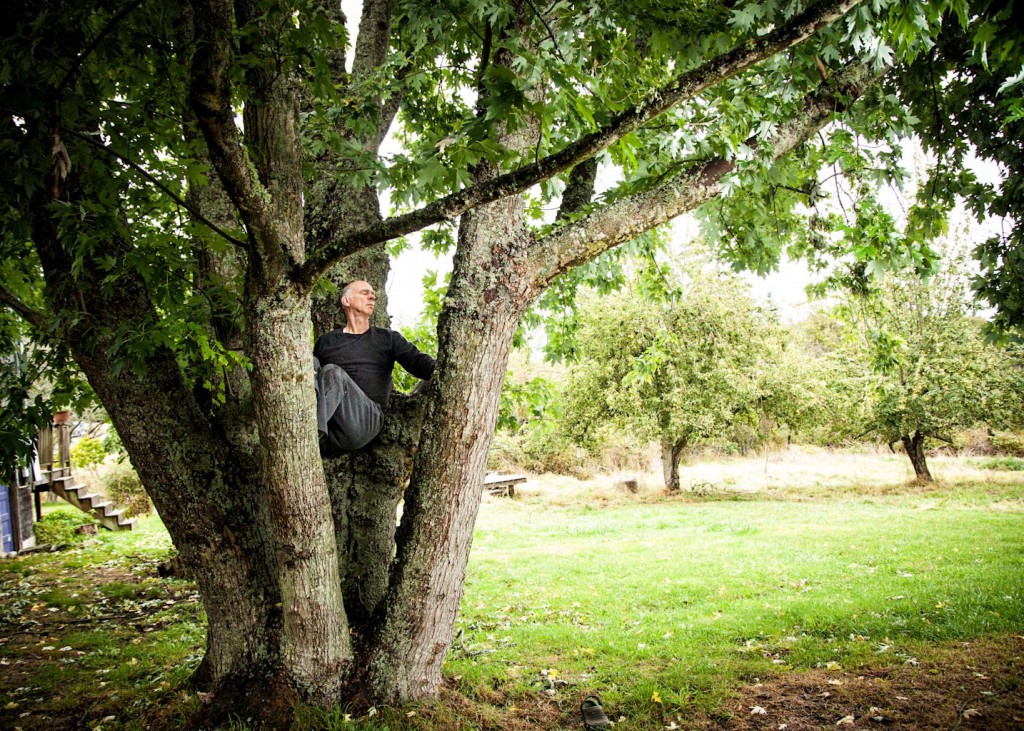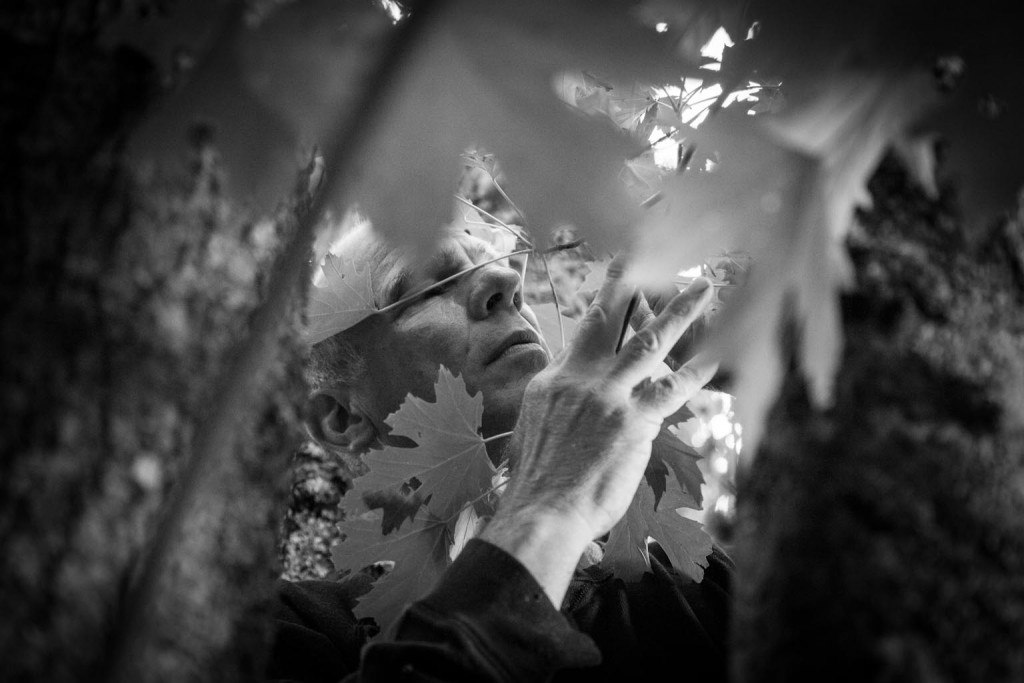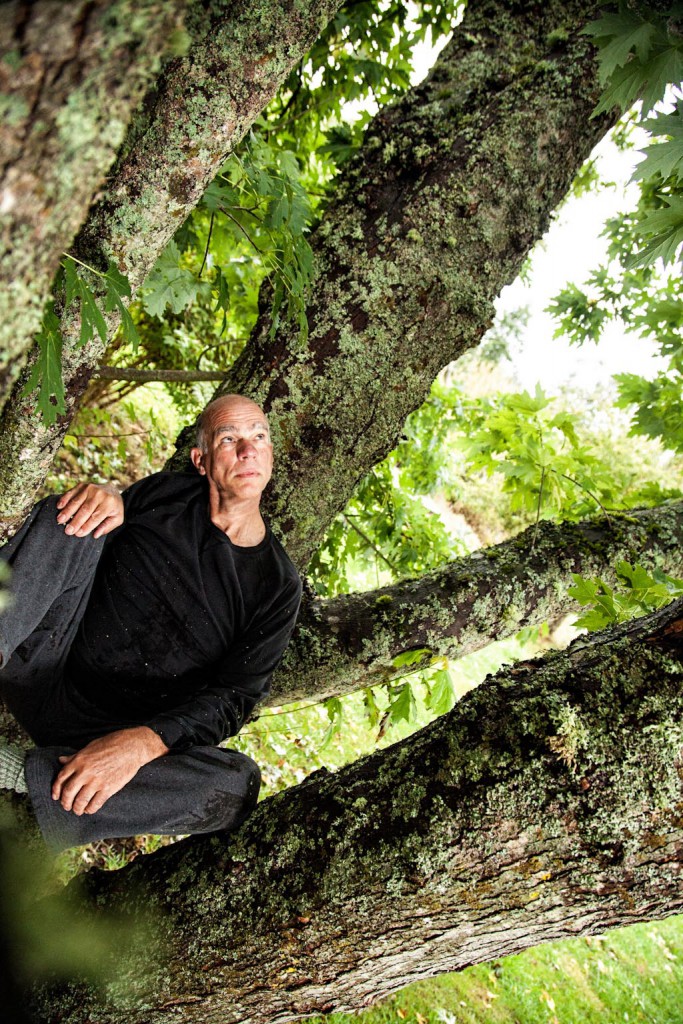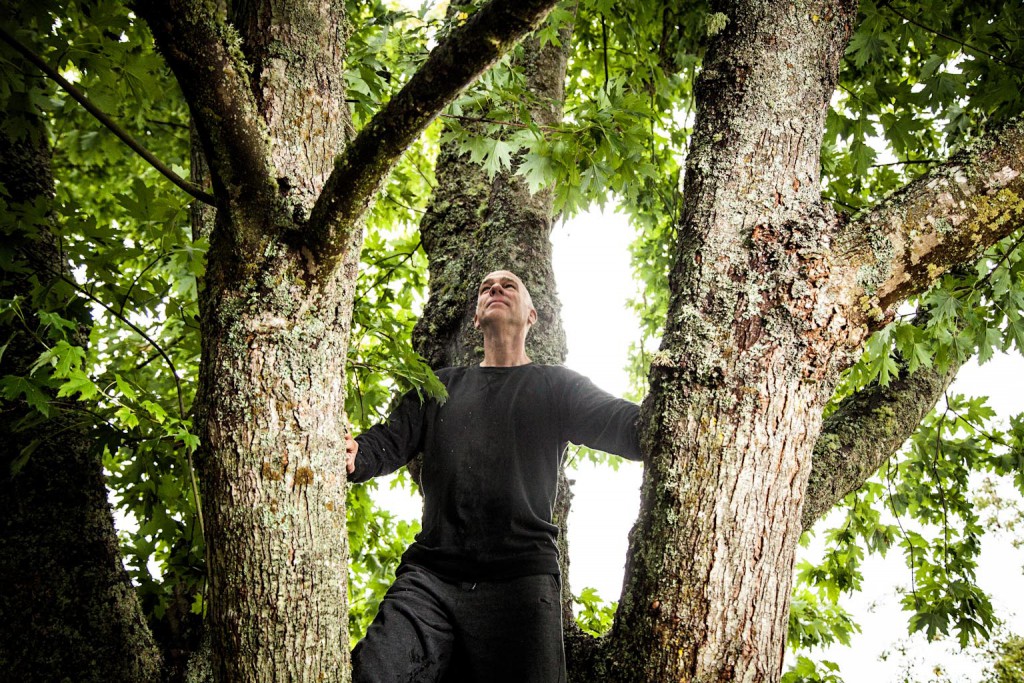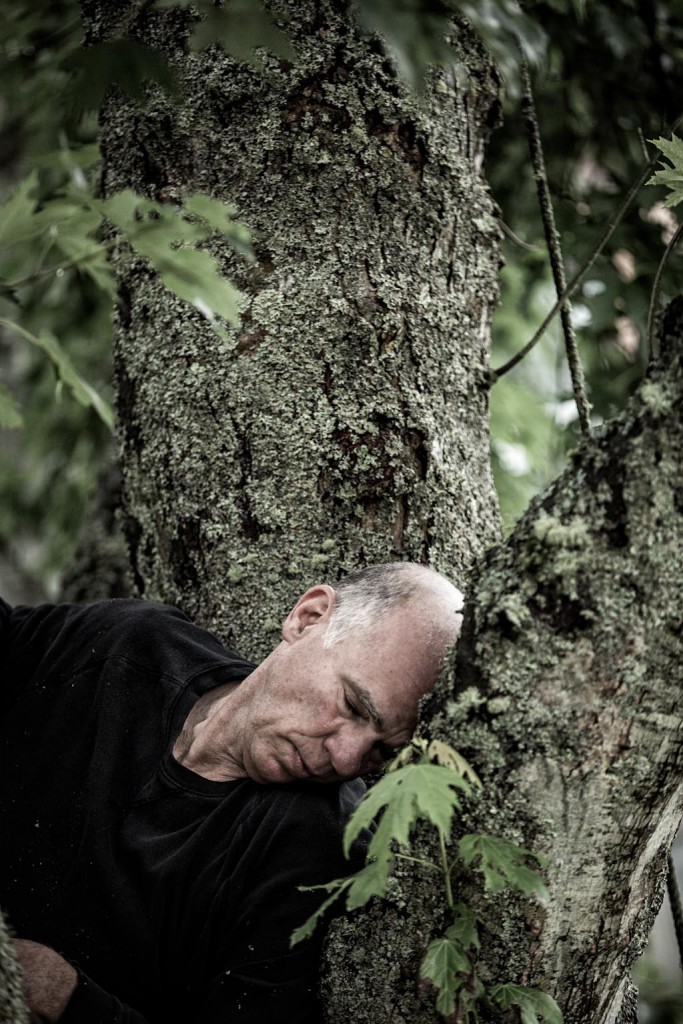Footprints in the Sand: An Interview with Jamie McHugh
BY EMMALY WIEDERHOLT; PHOTOGRAPHS BY GREGORY BARTNING
Without so much as a suggestion, Jamie stepped into the boughs of the tree adjacent to his house and started dancing with it. His dance wasn’t just placed in the environment; it was an obvious extension of it. The tree and Jamie held time and space for each other, his skin and muscles porous against the bark and leaves.
This interview is from the book “Beauty is Experience: Dancing 50 and Beyond.” Click here to learn more about the book, or click here to order your own limited edition copy!
~~
When did you start dancing and what have been some highlights along the journey?
I saw my first dance concert when I was 17 and living in London. I was sharing an apartment with a couple of ballet dancers, and one of my roommates took me to see Maurice Béjart’s company. The piece was about Nijinsky. I’d never seen anything like it. I went back the next night to see it again.
When I was in college as an English major at the University of Wisconsin, I rode my bicycle from Madison back to the East Coast for the summer. Experiencing that physical vitality was really new and exciting for me, and I wanted to continue when I went back to college.
A friend of mine was taking a women’s self-defense class and said they were looking for men to spar with. It was karate, and on Fridays the teacher would bring disco music. The music made the movement come alive. We’d go to a bar after and dance in a circle, with one person going into the center and improvising with kicks and punches.
I realized I just liked to move, so I took an improvisation class at the university. The teacher’s approach was about unleashing creativity. Years later, I realized my initial experience with dance was unique; most people begin with a specific technique. This set a tone for me that dance is for personal liberation and creativity.
In Madison, an elementary school teacher loved my movement class with her students and introduced me to all her cronies in the school district. Her mentorship launched my career as a creative dance specialist. I focused on explorations of space, time, force, presence, awareness of each other and the environment. Out of this, the kids and I created structured improvisations. That’s what I did for many years.
Along the way, I struggled with the institutional model of modern dance – the paradigm where you work on your technique until you’re good enough to be in someone’s company, at which point you start to get attention and perhaps eventually become a choreographer. This model felt politically regressive and incomplete. I was always in tension with this aspect of the dance world.
That tension finally broke for me when I visited my sister in San Francisco in 1984 and took a modern dance class. As I tried to do the combination, I had a revelation that these abstract ways of moving were not me and I didn’t know why I kept trying to become that type of dancer. That was officially my last technique class. That same week, I went out to visit Anna Halprin at her studio in Kentfield. She had people dancing to live drumming, working with space and relationship, and I thought, “Yes, this is much more my interest.”
In the fall of 1986 I moved to the Bay Area to study with Anna, eventually becoming an apprentice and then a teacher at the Tamalpa Institute. I’ve continued my somatic and creative explorations ever since.
What does your current dance practice look like?
I am a body 24-7, so my dance practice is my body practice, which is ongoing throughout the course of a day. That’s part of my mission: to bring this orientation into the public consciousness. As the body becomes more and more virtual, the constant stimulation brings the breath into the chest. That’s a replication of the fight or flight response and, when a body is amped up, the organs of digestion and sensation freeze. In a sense, our bodies and brains are being reshaped to be less self-identified and more outer-identified. If anything, this is why dance is vital for the perpetuation of humanity.
What is your motivation to dance and how has it changed with time?
In coming to dance late in the conventional sense, I had no preconceptions about a career or where it was taking me. Dance was a whole landscape I hadn’t known existed – and I wanted more. It spoke to my soul. To discover freedom in movement and to be physically and creatively alive was awesome.
My work now is simply about relationship: how to be in relationship and communion, whether I’m working internally, communally or in a specific environment.
What does the idea of success mean to you?
When I was living in Sea Ranch, there was a 70 year-old woman in my weekly class who said to me, “Whenever I go to a movement class, I’m so concerned if I can keep up and if I’m doing it right. But in your class, I don’t even think about it, because I know I will always be successful.”
Her comment reinforced my value system that success is when people feel: “I am my body, my movement is a unique expression of me, and this moving body gives me pleasure and satisfaction.” This is a strategy for health and creativity. One of my main critiques of specialized movement systems is that people take on the system before they have the basics. Whatever we repeat is what we’re actually learning. If every time I do a new movement I hold my breath because I am trying to get it right, I create a motor pattern of holding my breath in any new situation. How do we create conditions in our bodies for fluidity and ease so that little by little we can take on complexity?
What do you perceive is your legacy?
Legacy is a burden and a calling. Our work is how we leave our footprints in the sand. I feel a certain pressure and responsibility to be an advocate for the body and its expression, to transmit a humane and holistic approach to dance. Once I see people’s responses to what I am offering, I ask myself, “How could I not?” The question is how to balance the quiet life I have with a calling to be socially and politically involved.
What advice would you give to a younger generation of dance artists?
Expand your horizons. Get a sense of all the ways the body can come to life – bodywork, somatic modalities, mountain climbing, etcetera. Have various sensory/aesthetic experiences of all kinds – art, music, literature, etcetera .
Any other thoughts?
Everything that happens in our life informs our movement responses. Our dance is, in a sense, a Rorschach test of who and what we are.
~~
Jamie McHugh is a registered somatic movement therapist, somatic coach and fine art photographer. He has been teaching movement for over 35 years. From 1982 to 1987, he was a National Endowment for the Arts artist-in-residence and a director of children’s dance theater in Wisconsin. He apprenticed under Anna Halprin at the Tamalpa Institute, and has been a faculty member there since 1988. He recently completed his first book, Restoring Original Grace: Movement as Medicine.
This interview is from the book “Beauty is Experience: Dancing 50 and Beyond.” Click here to learn more about the book, or click here to order your own limited edition copy!

